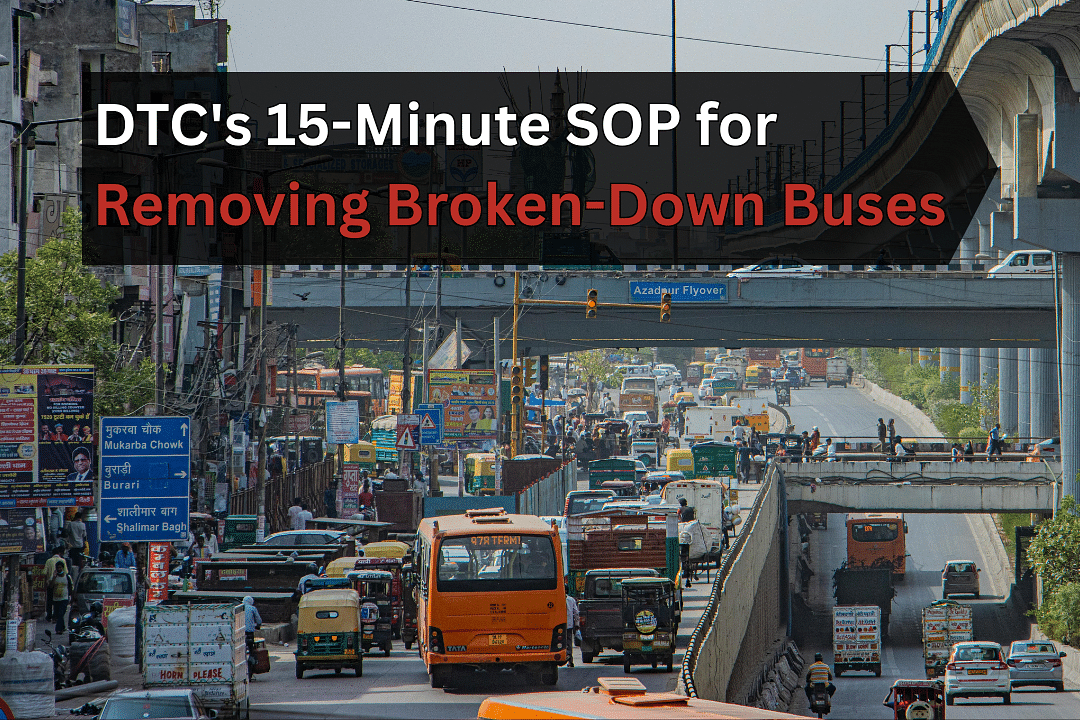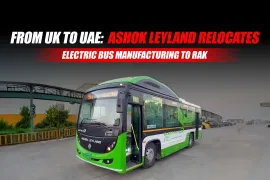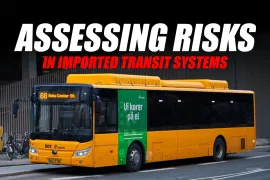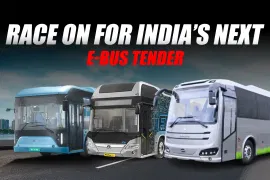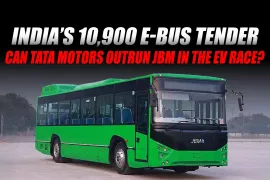In a decisive move to ease traffic congestion and restore efficiency to Delhi’s public transport system, the Delhi Transport Corporation (DTC) has introduced a time-bound Standard Operating Procedure (SOP) aimed at removing stalled buses from roads within 15 minutes of a breakdown.
Delhi’s arterial routes often grind to a halt – not because of sheer volume alone, but due to the daily breakdown of over a hundred buses. On average, 100 to 123 DTC buses break down every day, with disruptions occurring at major choke points: ISBT Kashmere Gate, AIIMS flyover, Minto Bridge, Sarai Kale Khan, ITO, and Vikas Marg, to name just a few.
Many of these buses—over 2,500 of them – are operating beyond their intended lifecycle, some well past the expiration of their Annual Maintenance Contracts (AMCs). Originally procured for the 2010 Commonwealth Games, they now run with a ticking clock of mechanical failure. The DTC plans to retire these vehicles by year’s end, in what may be one of its largest rolling withdrawals in recent memory.
The corporation isn’t waiting for replacements to fix the problem. Instead, it has designated 30 critical hotspots across the city and stationed 30 cranes and Quick Response Teams (QRTs) at those locations. These teams have a strict directive: reach the breakdown site within five minutes of the alert, remove the bus within 15 minutes, and clear the road for normal traffic flow.
This marks a stark departure from the earlier method, where broken-down buses would sit stranded for hours – sometimes three to four – as help arrived from the nearest depot. The new SOP aims to compress hours into minutes, especially crucial during peak traffic hours, extreme heat, or during seasonal downpours that already burden Delhi’s roads.

Detailed in a 34-page procedural document, the SOP outlines roles from the ground up. At its core is a 24×7 control room, operated by two deputy managers and supervised by a nodal officer, who coordinates all responses, tracks real-time breakdown alerts, and monitors weather-induced risks like waterlogging.
At the regional level, officials are tasked with enforcing protocol compliance and ensuring seamless coordination between departments, including the Delhi Traffic Police. Depot managers, meanwhile, have been instructed to conduct daily bus-readiness checks, counsel drivers on high-risk zones, and preempt mechanical failures wherever possible.
When a breakdown does occur, the QRTs step in not just to tow the bus, but to assist with minor repairs or facilitate the transfer of stranded passengers to alternate vehicles – crucial for maintaining service continuity.
During the monsoon, these teams carry an added responsibility: to identify and report waterlogged routes in real time, enabling the control room to reroute buses before they get trapped.
To support the primary teams, DTC has deployed 100 field operation units, four regional squads, and 70 depot-level bike teams capable of responding to smaller faults like brake issues on the go. It’s a multi-tiered response strategy – one that doesn’t just treat the symptoms but seeks to close the systemic gaps.
The goal is clear: faster recovery, fewer blockages, and a smoother ride for Delhi’s lakhs of daily commuters.
- Stay updated with 91trucks for more articles and news.
- Subscribe to our YouTube channel.
- Follow us on Facebook, Instagram, and LinkedIn
Web Stories
Latest Buses News
Categories
91trucks is a rapidly growing digital platform that offers the latest updates and comprehensive information about the commercial vehicle industry.
